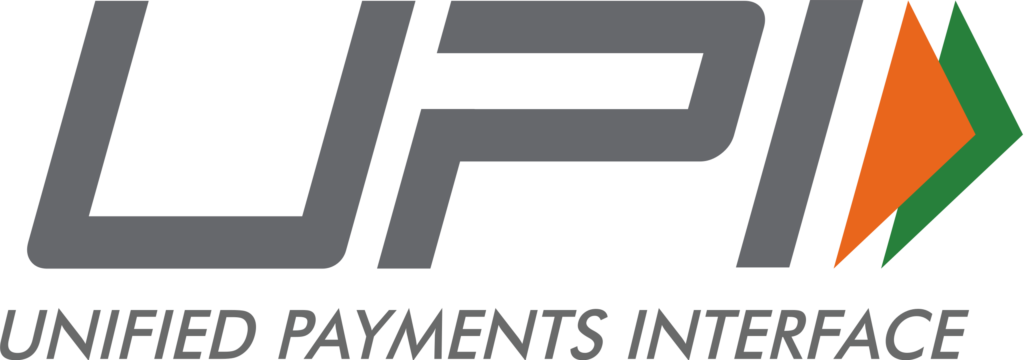Welcome to Daily Banking Digest, your premier source for the latest news and insights on May 06, 2024, focusing on banking, the economy, and finance. Our platform offers a comprehensive overview of the day’s most critical financial stories, market trends, and economic developments. Whether you’re a professional in the financial sector, an investor monitoring market movement, or someone interested in staying informed about the economic landscape, Daily Banking Digest provides reliable, up-to-date information.
Join our Telegram Channel for Daily PDF in your Inbox – Click Here
Table of Contents
India’s Pesticide Residue Limits for Spices Revised Based on Scientific Recommendations
The Food Safety and Standards Authority of India (FSSAI) has clarified that India maintains stringent Maximum Residue Limits (MRLs) for pesticides in food products, including spices. The MRLs are revised based on scientific data and international norms to ensure consumer safety. The recent increase in MRLs for certain unregistered pesticides in spices was recommended by the Scientific Panel on Pesticide Residues and aligns with global standards.
Key Points:
1. Stringent MRL Standards: – India has one of the most stringent MRL standards for pesticides in the world.
2. Dynamic MRLs: – MRLs are revised based on scientific data and global standards.
3. Unregistered Pesticides in Spices: – The MRL for unregistered pesticides in spices has been increased from 0.01 mg/kg to 0.1 mg/kg.
4. Scientific Panel Recommendation: – The increase was recommended by the Scientific Panel on Pesticide Residues.
5. Codex Alimentarius Commission: – The Codex Alimentarius Commission has adopted MRLs in the range of 0.1 mg/kg and above for spices.
6. Pesticide Registration: – Pesticides are registered, banned, or restricted by the Central Insecticide Board and Registration Committee (CIB & RC).
7. Risk Assessment: – MRLs are fixed based on risk assessment data for different food commodities.
8. Stringent Indian Standards: – India’s MRLs for pesticides are often more stringent than Codex standards.
Surge in Home Loan Debt: Outstanding Amount Crosses ₹27 Lakh Crore in March
The housing sector in India has witnessed a significant surge in credit outstanding, reaching a record ₹27.23 lakh crore in March 2024. This growth is attributed to a strong revival in the residential property market post-COVID-19, driven by pent-up demand and government initiatives.
Key Points
Growth in Housing Credit Outstanding – Credit outstanding to the housing sector rose by nearly ₹10 lakh crore in the last two fiscals. – It stood at ₹27,22,720 crore in March 2024, up from ₹19,88,532 crore in March 2023.
Factors Contributing to Growth – Strong revival in residential property market post-COVID-19. – Pent-up demand for homeownership. – Government push for affordable housing.
Impact on Home Loan Growth – High growth in home loans due to housing boom across all segments. – Affordable housing segment witnessed an uptick. – Home loan growth expected to remain robust but may taper down to 15-20%.
Rise in Housing Loan Outstanding – Significant increase in the quantum of properties launched and sold in the last two fiscal years. – High rates of price appreciation in major Tier-1 cities. – Average loan size per property has increased.
Outlook for Housing Loan Segment – Housing loan segment expected to remain on an uptrend due to strong demand for residential real estate. – Mortgage penetration level in India is increasing but remains lower than developed economies. – ICRA expects housing finance to grow by 12-14% annually in the near-to-medium term.
Demand for Homes – Unprecedented surge in demand for homes, particularly in the aftermath of COVID-19. – Shift in perception of homeownership. – Residential real estate serves as a sanctuary and an attractive investment avenue.
Factors Driving Demand – Favourable government policies. – Attractive financing options. – Growing aspirations for homeownership.
Long-Term Outlook – Long-term outlook for the housing market remains strong. – Home loan growth is likely to remain strong accordingly. – Realtors believe the sector is in the early stages of a long-term upcycle.
Enforcement Directorate Seizes 268 Bitcoins Valued at Rs. 138 Crore from Haldwani Resident
The Enforcement Directorate (ED) has seized 268 bitcoins worth ₹138 crore from a Haldwani resident, Parvinder Singh, who is allegedly involved in an international drug trafficking group. The recovery was made in collaboration with US authorities, who are investigating Singh’s involvement in the group known as “The Singh Organisation.”

Key Points:
1. Bitcoin Recovery: – ED recovered 268 bitcoins worth ₹138 crore from Parvinder Singh.
2. International Drug Trafficking: – Singh is allegedly involved in an international drug trafficking group called “The Singh Organisation.”
3. Dark Web Involvement: – The group used vendor marketing sites on the dark web to facilitate drug sales.
4. Cryptocurrency Transactions: – The group received payments in cryptocurrency for drugs and laundered the proceeds through cryptocurrency wallets.
5. US Investigation: – US authorities have been investigating Singh’s involvement in the drug trafficking group.
6. Common Monikers: – Singh and his co-accused used common monikers on dark web markets such as Silk Road 1, AlphaBay, and Hansa.
7. Bitcoin Withdrawals: – The US investigation revealed that the group received around 8,488 bitcoins using these monikers.
Kareena Kapoor Khan Embarks on a Mission as UNICEF India’s National Ambassador
UNICEF India has appointed Bollywood star Kareena Kapoor Khan as its National Ambassador and four Youth Advocates to promote child rights, including early childhood development, health, education, and gender equality.

Key Points:
National Ambassador:
- Kareena Kapoor Khan appointed as UNICEF India’s National Ambassador.
- Will support UNICEF’s mission to ensure every child’s rights to early childhood development, health, education, and gender equality.
- Has been associated with UNICEF India since 2014.
Youth Advocates:
- UNICEF India appoints its first-ever Youth Advocates.
- Four advocates appointed: Gauranshi Sharma, Kartik Verma, Nahid Afrin, and Vinisha Umashankar.
- Will champion issues like climate action, mental health, innovations, and Girls in STEM.
- Part of UNICEF’s global program with over 93 youth advocates worldwide.
UNICEF India’s Commitment:
- UNICEF India Representative Cynthia McCaffrey welcomes Kareena Kapoor Khan and the Youth Advocates.
- Emphasizes the importance of their support in advocating for child rights.
- Looks forward to working with them to continue promoting child rights in India.
India and Ghana Collaborate to Integrate UPI into Ghana’s Interbank Payment Infrastructure
India and Ghana are collaborating to connect their payment systems, UPI and GHIPSS, enabling instant and cost-effective fund transfers between the two countries. They are also exploring partnerships in digital transformation, local currency settlement, and leveraging the African Continental Free Trade Agreement (AfCFTA).

Key Points:
Payment System Linkage: – India and Ghana aim to link UPI and GHIPSS within six months. – UPI has already been implemented in Singapore and the UAE, with discussions underway with Nigeria.
Digital Transformation and Trade: – India and Ghana are considering a Memorandum of Understanding on digital transformation solutions. – They are exploring a local currency settlement system. – The AfCFTA presents opportunities for enhanced trade and cooperation.
Bilateral Trade: – Bilateral trade between India and Ghana has increased to USD 2.87 billion in 2022-23. – Ghana exports gold, cocoa, and timber to India, while India exports pharmaceuticals and machinery. – The trade gap favors Ghana due to India’s gold imports.
India’s Appeal to ADB: Prioritize Growth and Shared Prosperity
India has urged the Asian Development Bank (ADB) to prioritize poverty reduction alongside sustainable growth in the Asia Pacific region. India’s Temporary Alternate Governor Vikas Sheel emphasized the need to address remaining poverty and ensure inclusive growth. ADB President Masatsugu Asakawa highlighted the bank’s increased commitments in 2023, including a record amount for climate finance.

Key Points:
1. India’s Concerns: – India expressed concern that poverty reduction is not a focus area in ADB’s Strategy 2030 review. – India urged ADB to prioritize growth and shared prosperity as per its charter mandate.
2. India’s Support: – India assured its continued support for accelerated, inclusive, and sustainable growth in the region. – India increased its contribution to the Asian Development Fund (ADF) to support smaller economies.
3. ADB’s Performance: – ADB committed USD 23.6 billion in loans, grants, and other assistance in 2023, a 15% increase from the previous year. – ADB provided a record USD 9.8 billion in climate finance from its own resources. – ADB met its corporate financing targets for health, gender, and education.
4. ADB’s New Operating Model: – ADB’s new operating model will emphasize climate action and private sector development. – ADB will introduce new digital tools, regional work programs, and corporate performance indicators to enhance accountability.
5. ADB’s Ownership and Mission: – ADB is owned by 68 members, 49 from the region. – ADB aims to achieve a prosperous, inclusive, resilient, and sustainable Asia and the Pacific while eradicating extreme poverty.
IOB to Auction 92 Non-Performing Assets with Outstanding Loans of Rs. 13,472 Crore
Indian Overseas Bank (IOB) will auction 92 non-performing loans (NPLs) with an outstanding balance of Rs 13,471.68 crore on May 28th. The bank has invited expressions of interest from asset reconstruction companies (ARCs) and other eligible transferees by May 13th to participate in the e-auction.
Key Points:
Loan Portfolio: – 92 NPLs with an aggregate outstanding of Rs 13,471.68 crore – Offered in two portfolios: – Portfolio 1: 46 consortium accounts, 3 multiple banking accounts, 2 sole banking accounts (38 accounts admitted under NCLT) – Portfolio 2: 41 sole banking accounts
Auction Details: – E-auction scheduled for May 28th – Open auction method – Expressions of interest (EOI) due by May 13th
Bank’s NPA Reduction: – Gross NPA levels reduced from 11.69% in March 2021 to 3.90% in December 2023.
RBI Cautions Fintechs Against Uncontrolled Growth
The Reserve Bank of India (RBI) has advised fintech companies, particularly those involved in lending, to moderate their growth. The regulator’s concern stems from the continued high growth in unsecured loans despite risk weight curbs. Fintech lenders are now facing a dilemma as they balance compliance with RBI’s warnings and the need to satisfy investors and achieve profitability.
Key Points:
RBI’s Concerns: – High growth in unsecured loans despite risk weight curbs – Systemic risks associated with excessive growth
RBI’s Message to Fintechs: – Target growth at around 15-20% – Cut down growth in loan products and loan service provider operations
Fintechs’ Dilemma: – Compliance with RBI’s warnings vs. investor expectations – Difficulty in generating high returns with slower growth – Importance of volumes and scale for profitability
Alternative Strategies: – Exploring venture debt to improve return profile – Considering alternative business models such as gold loans and loan against property – Resetting growth rates through new options
The Transformative Power of Digital Public Infrastructure: A Journey of Innovation
India has made significant strides in deploying Digital Public Infrastructure (DPI), transforming its socio-economic landscape. With the highest number of digital transactions globally, a booming digital economy, and a massive internet user base, India is leveraging DPI to empower citizens, enhance governance, and drive innovation.
Key Points:
1. Digital Transactions and Economy: – India has the highest number of digital transactions, surpassing the combined figures of the US, China, and Europe. – The digital economy is projected to reach $1 trillion by 2025.
2. Internet Connectivity and Digital Identity: – Over 759 million Indians are actively connected to the internet, with a significant portion in rural areas. – The Aadhaar programme has enrolled nearly 1.3 billion citizens, facilitating efficient delivery of services.
3. Digital Payments and Broadband: – The Unified Payments Interface (UPI) is witnessing exponential growth, expected to reach a billion transactions daily by 2026. – Broadband connectivity has reached over 93% of Indian villages.
4. Government Initiatives: – The National Optical Fibre Network (NOFN), Digital India, National Broadband Mission, and National Data Centre Policy have laid the groundwork for a robust digital infrastructure. – The Bharat Net Project aims to connect villages through high-speed internet.
5. Beyond Connectivity: – The Jan Dhan-Aadhaar-Mobile (JAM) trinity has streamlined direct benefit transfers. – Initiatives like Ayushman Bharat Mission and Unified Logistics Interface Platform (ULIP) are transforming healthcare and logistics. – Digilockers and authentication frameworks empower citizens with secure document storage and access.
6. E-Governance and Digital Empowerment: – DPI has ushered in an era of e-governance, providing online access to government services. – The National e-Governance Plan (NeGP) offers a one-stop platform for various services. – Digitalization has streamlined processes, reduced bureaucracy, and enhanced transparency.
7. Productivity and Innovation: – DPI initiatives have boosted productivity, improved efficiency, and generated employment opportunities. – It fosters global connectivity, financial inclusion, and innovation. – DPI is transforming education through e-learning and healthcare through telemedicine.
8. Crisis Response: – DPI played a crucial role during the pandemic, ensuring swift delivery of financial assistance and access to vital services.
9. Global Reach: – India has the potential to lead the global conversation on DPI development. – Its success with multi-language support, collaborative platforms, and real-time data analysis holds valuable lessons for others.
10. Challenges and Future: – The digital divide persists, and equitable access to technology remains a priority. – Concerns regarding accountability and data protection require careful consideration. – India is committed to taking the lead in the global digital revolution.
Banks May Contest CBI’s Retroactive Application of Fraud Account Regulations
The Central Bureau of Investigation (CBI) and banks are at odds over the interpretation of a Supreme Court ruling on the classification of fraudulent accounts. Banks argue that the ruling should not be applied retroactively to accounts previously labeled as fraudulent, while the CBI insists it applies to all cases. The disagreement threatens to stall investigations and has prompted banks to consider appealing to the Supreme Court for clarification.
Key Points:
1. Supreme Court Ruling: – The Supreme Court ruled that borrowers must be given a hearing before their accounts can be classified as fraudulent.
2. CBI’s Interpretation: – The CBI believes the Supreme Court ruling applies to all fraud accounts, including those labeled as fraudulent before the ruling.
3. Banks’ Interpretation: – Banks argue that the Supreme Court ruling cannot be applied retroactively to accounts previously classified as fraudulent.
4. Legal Minefield: – Banks fear that seeking fresh responses from past fraudulent borrowers could lead to legal challenges and difficulties in locating fugitive clients.
5. Investigation Stalled: – The disagreement between the CBI and banks is threatening to stall investigations in multiple cases.
6. Industry Body’s Appeal: – The Indian Banks’ Association plans to appeal to the Supreme Court for clarification on the retrospective effect of the ruling.
7. CBI’s Position: – The CBI maintains that the Supreme Court ruling applies to both future and past fraud cases.
8. RBI’s Master Directions: – The Supreme Court ruling aligns with the RBI’s Master Directions on Frauds, which require banks to provide borrowers with an opportunity to explain forensic audit reports before classifying their accounts as fraudulent.
9. CBI’s Focus on Criminal Angle: – The CBI will only investigate matters with a criminal angle, which it believes is established after an account is classified as fraudulent.
10. Stigma of Fraud: – The CBI is concerned about the stigma associated with the “fraud” tag, which can damage borrowers’ reputations and businesses.
Medical Tourism in India Projected to Surpass Pre-Pandemic Levels by 2024
Medical tourism in India is projected to surpass pre-pandemic levels, with an estimated 7.3 million medical tourists expected in 2024. India’s affordable healthcare, skilled medical professionals, and advanced infrastructure make it an attractive destination for medical value travel. Hospitals are expanding their international outreach offices to cater to the growing demand.
Key Points
Projected Growth in Medical Tourism – Number of medical tourists projected to reach 7.3 million in 2024, exceeding pre-pandemic levels.
Reasons for Rebound – India’s reputation for medical value travel, with affordable treatment and skilled medical experts.
Hospital Revenue from Medical Tourism – Medical tourism accounts for 10-12% of hospital revenue and is expected to grow at twice the industry rate.
Max Healthcare’s International Patient Revenue – Max Healthcare saw a 27% year-on-year growth in international patient revenue, contributing 9% to overall revenue.
Apollo Hospitals’ International Patient Revenue – Apollo Hospitals expects double-digit growth in international patient revenue, driven by new medical technologies and affordable treatment.
Expansion of International Outreach Offices – Hospitals are increasing their international outreach offices to serve as “embassies” in foreign countries.
Top Specialties Attracting Medical Tourists – Organ transplants, cardiac surgeries, oncology, orthopaedics, and neurosciences are the most popular specialties for medical tourists.
Outreach Office Services – Outreach offices provide assistance with inquiries, visa processes, travel arrangements, and treatment plans.
Capacity-Building Programs – Outreach offices also offer capacity-building programs and training for doctors and paramedics in foreign countries.











